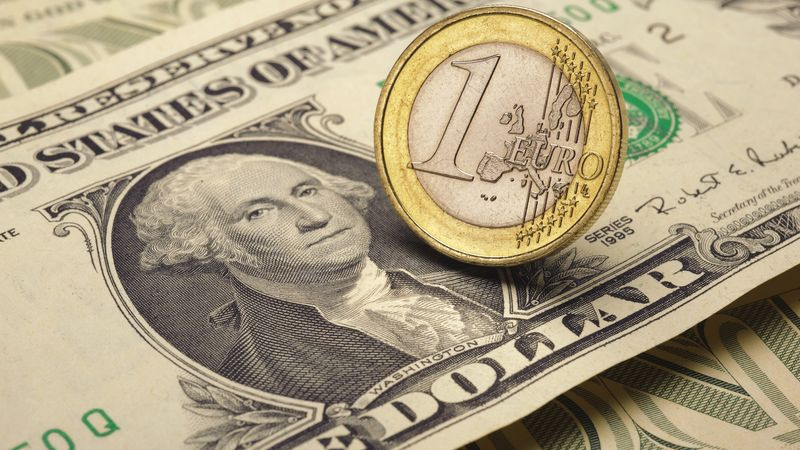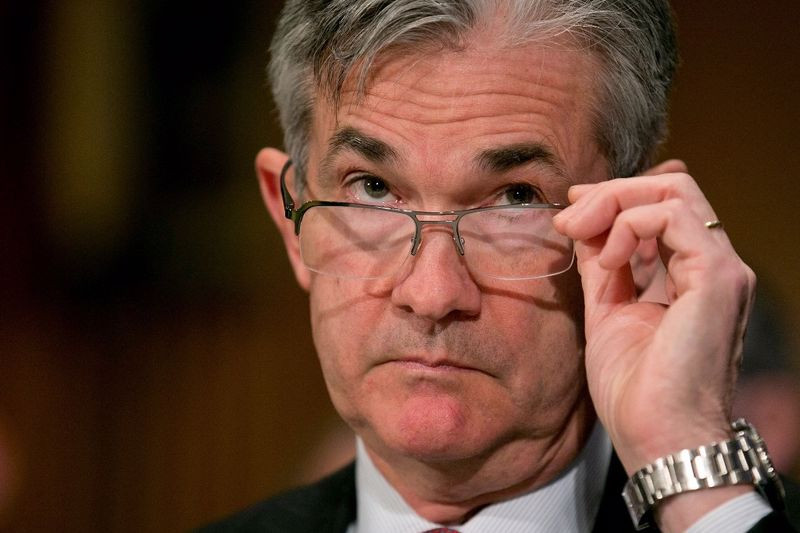
Without waiting for the FOMC's verdict on monetary policy, the main currency pair broke through the lower limit of the short-term consolidation range of 0.9950-1.0050 on Wednesday.
The single currency has fallen in price against its US counterpart amid reports that Russian President Vladimir Putin announced partial mobilization in the country. This has increased the degree of geopolitical tension in the European region.
As a result, risky assets were under pressure, and the protective dollar updated its multi-year peaks, rising above 110.80.
At the same time, futures on the main US stock indexes fell by 0.2-0.3%, and the EUR/USD pair lost about 0.8% from the last closing level of 0.9970.
According to Brown Brothers Harriman analysts, the flight from risk indicated that in recent weeks the markets have become too relaxed about the situation in Ukraine.
"The headlines from Russia overshadowed the Fed for a while, while concerns about the escalation of the conflict in eastern Europe primarily damaged the single currency," Societe Generale strategists noted.
On Wednesday, European Central Bank Vice President Luis De Guindos acknowledged that the euro exchange rate is an important variable that needs to be paid close attention to. This comment helped the single currency limit its losses.
Meanwhile, the greenback slowed down somewhat, tracking some weakening of the wave of risk aversion.
Against this background, futures on major US stock indexes were able to return to positive territory.
Wall Street started yesterday's trading with an increase. In anticipation of the Fed's monetary policy decision, the S&P 500 index jumped 30 points from the previous day's closing level of 3,855.93 points.
"Apparently, stock markets were still hoping that the Fed would show some signs of stopping raising rates at some point, but this did not happen," Nomura analysts said.
"In order to move to lower rates, I would like to be very confident that inflation is cooling," Federal Reserve Chairman Jerome Powell said at a press conference following the September meeting of the central bank.
Recall that in August, the CPI index in the United States increased by 8.3% year-on-year. Excluding the cost of food and energy, consumer prices increased by 6.3%.

The Fed is seriously aimed at easing inflation to the level of 2% and has the tools for this, said Powell. Price stability is the responsibility of the central bank. Further interest rate hikes are necessary, he added.
On Wednesday, the US central bank raised the key rate by 75 basis points, to 3.00-3.25%.
By the end of this year, the Fed plans to raise the cost of borrowing by at least another 1.25%. This implies another 75 basis point increase in the near future.
Futures on the federal funds rate estimate the probability of such a move at almost 65%.
The updated forecasts of the central bank indicate a prolonged struggle to suppress the highest rise in inflation since the 1980s, which could potentially push the national economy into recession.
The central bank lowered estimates of US GDP growth for this and next year to 0.2% and 1.2%, respectively. Previously, it was expected that the indicator would increase by 1.7% in 2022 and 2023.
At the same time, estimates of the unemployment rate were revised upward for the current and next years – to 3.8% from 3.7% and to 4.4% from 3.9%, respectively.
Powell noted that there is no painless way to reduce inflation, and warned that a delay in reducing inflation will only lead to even more problems.
"No one knows whether this process will lead to a recession, and if so, how significant this recession will be," the Fed chairman said after the announcement of the central bank's next decision to raise interest rates.
"The chances of a soft landing are likely to decrease to the extent that the policy should be more restraining for a longer period," he added.
Inspired by the hawkish prospects of monetary policy in the United States, reflected in the FOMC dot chart and Powell's statements, the greenback closed Wednesday near the highest levels in two decades at around 111.40 points.
Meanwhile, the US stock market ended Thursday trading with a fall. In particular, the S&P 500 plunged by 1.7% to 3789.93 points.
It seems that investors regarded Powell's hints that the recession should be considered as a payment for price stability, as a negative signal for the market.
The S&P 500 index has fallen 20% this year.

An extreme bearish position may prove to be a source of support for stocks, Bank of America strategists say.
According to the bank's latest monthly survey, fund managers have the lowest stock weight they have ever had, while cash levels are at their highest value in the entire history of observations.
"High returns, a low investor position and well-anchored long-term inflation expectations should mitigate any decline in risky assets from now on," analysts at JPMorgan Chase said.
However, not everyone is sure that the worst for the US stock market is over.
"Riskier assets are likely to continue to experience difficulties, as investors will take a more defensive position," Apollon Wealth Management analysts noted.
According to them, the rising yields of US government bonds will continue to blunt the appeal of stocks.
"Some investors may look at the stock markets and say that the risk is not worth it, and they may shift most of their investments towards fixed income," said Apollon Wealth Management analysts.
They point out that the average forward price-to-earnings ratio for the S&P 500 index was about 14 in 2007, the last time the Fed funds rate was 4.6%.
This compares with a forward P/E of just over 17 at the moment, which suggests that stocks may continue to fall as US interest rates rise.
"The Fed wants to convey the message that inflation will continue to be higher than previous forecasts and that the interest rate may reach 4.60% by the end of 2023. This further undermines the idea of a "reversal" of the Fed and leads to the fact that the foreign exchange market is inclined to a slowdown in growth and recession in the United States. This scenario favors the dollar compared to such pro-cyclical currencies as the euro," ING strategists said.
Tracking the unfavorable market environment for risk, following the results of Wednesday's session, the single currency fell in price against the greenback by more than 1.2%, finishing around 0.9840.
At the beginning of Thursday's trading, the EUR/USD pair touched the lowest level since October 2002 at 0.9810. Then it made a rebound, rushing to the 0.9900 mark.
This was largely facilitated by the comments of ECB Governing Council member Isabelle Schnabel.
The eurozone is facing an economic downturn, but inflation is still too high, so interest rates should continue to rise, she said.
"The coming recession will have a restraining effect on inflation. At the same time, the starting point of interest rates is very low, so it is clear that we need to continue increasing," said Schnabel.
Money markets are waiting for the ECB's key rate hike in October by 50 or 75 basis points.
Schnabel did not say what kind of increase she expects herself, but assured of the ECB's readiness to do everything necessary to bring inflation under control.

Having been defeated as it approached the 0.9900 mark, the EUR/USD pair rolled back, nullifying most of its daily gains.
A sharp decline in key Wall Street indices after the opening of trading in New York helped the dollar find demand and put pressure on the main currency pair.
After a short correction, the greenback returned to the 111 area.
"Expect that the dollar will continue to attract demand on falls, as confidence grows that deposit rates in the world's most liquid currency will rise above 4% in the coming months," ING analysts said.
Many central banks are now racing to tighten monetary policy, trying to contain the weakening of their currencies, but still do not keep up with the leader in the face of the Fed.
"The Fed is leading the world's key central banks to a more hawkish policy and making a recession more likely. As a relatively open economy with a large manufacturing base – and with a military conflict on the doorstep – the eurozone will face a number of serious challenges this winter. We suspect that the EUR/USD pair will continue to decline towards the 0.9650 area in the coming weeks," ING said.
Economists at Danske Bank believe that the Fed will prefer a more aggressive path and raise the rate by 75 bps at the November and December meetings.
"We also continue to believe that the risks are leaning towards the fact that the Fed will keep financial conditions at a restrictive level for longer. Consequently, as recognized by Powell, the chances of a "soft landing" of the economy have decreased. According to our forecast, the federal funds rate will be 4.25-4.50% by the end of the year. We also continue to adhere to our forecast of the EUR/USD pair falling to 0.9500 in the 12-month perspective," they noted.
As for the current picture, the initial resistance for the main currency pair is the 0.9870 mark. If the pair can rise above this mark and start using it as support, then the next targets of the bulls will be the round level of 0.9900, the 20-day moving average at 0.9950 and the 100-day moving average at 0.9980.
On the other hand, the nearest support is at 0.9800, the breakdown of which will allow the bears to head first to 0.9750, and then to 0.9700.
 English
English 
 Русский
Русский Bahasa Indonesia
Bahasa Indonesia Bahasa Malay
Bahasa Malay ไทย
ไทย Español
Español Deutsch
Deutsch Български
Български Français
Français Tiếng Việt
Tiếng Việt 中文
中文 বাংলা
বাংলা हिन्दी
हिन्दी Čeština
Čeština Українська
Українська Română
Română

